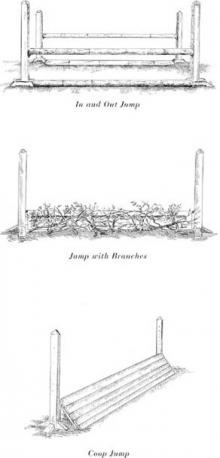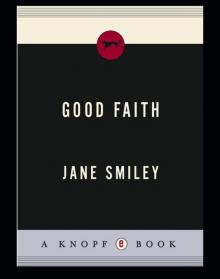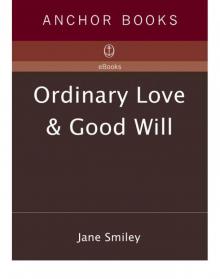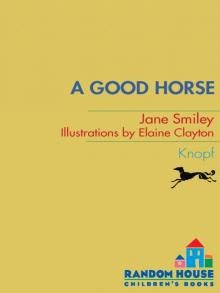- Home
- Jane Smiley
Charles Dickens Page 3
Charles Dickens Read online
Page 3
Charity and charitable enterprises were at the very heart of Victorian life and constituted the main way in which those unable to take care of themselves were taken care of by society. Very few social services as we know them were provided by the government—rather, churches and privately supported charitable institutions, upholding a wide variety of theories and methods, provided education, sustenance, sometimes employment, and care for those in need. Dickens did not uniformly support all of these institutions, especially not those sponsored by Evangelical groups. The combination of puritanical narrowness and crabbed strictness opposed Dickens’s instinctive sense that true charity was an outgrowth of kindly benevolence and good cheer. He had his own theories about the failures of his society and their proper alleviation, and he was frequently in sympathy with radical political ideas. At the same time, he deeply distrusted social unrest, including incipient revolutionary movements, labor strikes, or any potential violent confrontation between classes. Social order was his highest goal, a social order that recognized the responsibility of all to all and made plenty of room for the pleasures of life—entertainment, good fellowship, good food and drink, congenial surroundings, familial affection. While he feared social unrest, he deplored any means by which the moneyed classes might shirk their social responsibilities: harsh poor laws, legal obfuscation, bureaucratic incompetence and red tape, failure to attend to public works and public sanitation, or simple personal selfishness and profligacy. It can be fairly argued, in this context, that Dickens never shirked his. His mode of life demonstrated that he lived by play as well as work, believed equally in the value of each, and promoted the value of both for all members of Victorian society. In 1839, Dickens met Angela Burdett-Coutts, the heiress to the Coutts banking fortune, the wealthiest woman in England other than the queen. Two years younger than Dickens, Miss Coutts remained single until eleven years after Dickens’s death and devoted herself to a wide range of charitable projects, in many of which Dickens was her partner and agent, especially a project for retraining and rehabilitating fallen women, called Urania Cottage.
From his earliest writings, Dickens frequently expressed the opinion that ignorance and want go hand in hand and together cause many social ills, from disease to crime to social unrest. Over and over, his depictions of children included critiques of cruel, ineffectual, and neglectful educational institutions, and he relentlessly made the point that the child is father to the man. In his third novel, Nicholas Nickleby (which began to appear at the end of March 1838), he succeeded in bringing together several of his concerns and several of his customary styles, and he produced what may be seen as his first wide-ranging “Dickensian” novel. Depiction of an educational institution—one of the “Yorkshire schools,” where illegitimate and otherwise inconvenient children were warehoused at low cost by their families—was his avenue into the novel, but as yet he was not quite ready to form the entire narrative around a single overarching theme, as he was later to do with Bleak House and Little Dorrit. He took as his protagonist a young man not unlike himself or, perhaps, a young man who was a combination of himself and the standard hero of a melodrama. Nicholas’s father dies of grief over losing his property, and Nicholas, his sister, Kate, and their mother go to London and seek the aid of their uncle, Ralph Nickleby. Ralph is a moneylender, a greedy, heartless rich man who has no family feeling other than a long-standing contemptuous envy for his more humane but less successful brother. Ralph and Nicholas are soon bitter enemies. Ralph consents to help Mrs. Nickleby and Kate on the condition that Nicholas accept employment with Squeers, the proprietor of one of the Yorkshire schools.
The plot of Nicholas Nickleby is episodic and owes a considerable amount to the devices of early Victorian drama—Ralph’s villainy is unrelieved and relentless, and Nicholas’s heart is invariably pure. It is the peripheral characters that Nicholas encounters as he makes his way who supply the humor and psychological interest. The young, romantic lead characters are not so idiosyncratic, and their dilemmas are rather formulaic. But Nicholas Nickleby is a lively and entertaining reading experience and, in the context of Dickens’s other works, has several features of interest. Whereas the Pickwickians went out into the world to see what they might see, a leisure activity, and Oliver went out to find himself a home, Nicholas must confront the choices of a life work and a life partner (choices Dickens himself had had to make rather recently). He has to find a way to make himself an agent in the world rather than an observer, like the Pickwickians, but neither does he need or desire to escape the world, like Oliver; so Dickens has a look at several types of work—education, art, theater, finance, business, and fashionable dressmaking. There is even a portrayal of aristocratic profligacy as a career. Nicholas’s story is the story of making choices, and therefore seeking maturity, though in the conventional modes of work and domestic life.
It is evident from the tone of the novel, which is ebullient and lively, that Dickens was enjoying his own domestic life (a few days before the publication of the novel in volume form, at the end of October 1839, Dickens and Catherine had a third child, Kate). The final image of Nickleby is of happy marital fertility—Nicholas and Madeline’s children gathered about the quiet grave of Smike, honoring his memory. Nickleby is remarkable among Dickens’s work for other reasons as well. Sir Mulberry Hawke and his associates are open sexual predators, who prey upon Kate with the collusion of her uncle, and, in a different way, the lascivious designs of the old miser, Gride, upon Madeline Bray are expressed and developed. In fact, much of the peril of Madeline’s sacrificial marriage arises from the image of the young beautiful girl in the arms of the repulsive old man. Nicholas Nickleby is full of lusty men, young and old, and their beautiful objects of desire. In an interesting twist, Mr. Mantalini, who lives off his wife, repeatedly uses the language of ardent romance to woo her and blind her to the financial ruin he is bringing upon her establishment. This relative openness about romance and sexuality is not characteristic of later Dickens novels, which take a much less earthy view of happy domesticity and a much darker view of marriage in general. But the brightness of Nickleby is of its historical as well as its biographical moment—at the end of the 1830s, the respectability of Victorianism had not yet entirely supplanted the rowdiness of the eighteenth century, and traces of older ways remain in what we might otherwise see as the first truly characteristic novel of the most characteristic novelist of the Victorian period.
Nicholas Nickleby was successful as a serial publication, selling fifty thousand copies of the first number and maintaining sales throughout, then selling well as a volume, too. Its popularity did not sustain itself, however, and the novel became one of Dickens’s least read works, a high-spirited but not quite successful transitional novel in which Dickens began to try out the ideas and methods that would bear fruit a few years later.
CHAPTER TWO
BY 1838, the shape of Charles Dickens’s life was firmly set. Its typical features were to remain unchanged thereafter for some eighteen years: celebrity, conviviality, restlessness, hard work, ambivalent domesticity, all forms of literary endeavor from the most private to the most public, and most forms of civic responsibility from private charity to public pronouncements.
Among Dickens’s many friends was the artist and illustrator Daniel Maclise, who painted a portrait of Dickens while he was completing Nicholas Nickleby that now hangs in the National Portrait Gallery in London. The portrait was considered by Dickens’s friends to be an excellent likeness. It was unveiled at a dinner held to celebrate the completion of Nickleby and was later engraved and included in the bound volumes of the novel as the frontispiece. Here is Charles Dickens at twenty-seven, the most famous writer of his day. He is turned to his left, and light from some source falls full on his face. His countenance is handsome and youthful, with a high forehead, large eyes, a prominent nose, and curving lips. Light also falls on his hands, one of which is splayed across the pages of a manuscript. The fingers are long and graceful. Dickens�
��s hair is flowing and dark, he is clean-shaven, he is wearing a dark suit and a dark cravat at his neck. He looks pensive and “literary.” He also looks extremely young, younger than his age, his experience, and the self-confident sophistication of his writing style. If, indeed, his friends considered it a proper likeness, then surely one thing they saw in it would have been its air of quietness almost unto sadness.
But even so, Dickens’s more signal quality, the one most often commented upon by his acquaintances and the one he relied upon at all times, was his energy. It was in this period that he took up the habit of long, vigorous daily walks that seem almost unimaginable today for an otherwise very busy man with many obligations. At a pace of twelve to fifteen minutes per mile, he regularly covered twenty and sometimes thirty miles. Returning, as his brother-in-law said, “he looked the personification of energy, which seemed to ooze from every pore as from some hidden reservoir. . . .” His energy contended with discouragement, fear, discontent, and illness—he had been frequently ill as a child, and recurrent bouts of a painful kidney ailment, as well as some sort of facial neuralgia, nervous exhaustion, and various infectious diseases, continued to plague him. He veered between overflowing vitality and prostration in a manner that seems to the modern sensibility almost hysterical. Every stimulus produced an enormous reaction, to the point that right around this period in Dickens’s life, it was rumored that he was mad. Certainly, he was frenzied, and certainly, in the grips of inspiration, he had only tenuous control over his facial expressions and his tongue. His daughter Kate as an adult recalled watching Dickens at work; the characters and their voices seemed to possess him—he spoke their lines and acted out their parts as he wrote them down, often looking into a mirror.
In the first five years of their marriage, Charles and Catherine produced four children and officially moved their household three times, but additionally, each summer they moved to various rented houses at Broadstairs, or Petersham, in Kent, and back to London in the autumn. They traveled abroad as well, to France, Belgium, and the Isle of Wight. That this restlessness was stressful to the marriage cannot be doubted—Dickens’s letters increasingly betray dissatisfaction with Catherine’s “slowness” and her invariable postpartum depressions. It seems not to have occurred to him that curbing his own appetites and relieving her from an endless cycle of pregnancy and parturition was a possibility. Rather he looked to her, or to her doctors, to strengthen her and fortify her capacity to live up to the image he had of what his wife should be and do. His sense of grief and loss over the death of Catherine’s sister Mary remained powerful and overt, and possibly distressing, to Catherine, but he showed no awareness, once again, that his behavior needed modifying. There is also no doubt that Dickens had strict and rigorous views about how the household was to be run. He expected absolute order and meticulous cleanliness, quiet when he was working, and boisterous fun, with many visitors, when he was ready for it. He was, in short, something of a domestic tyrant, whose sensitivity to the needs of his wife (toward whom he still seems to have felt considerable affection at this point) and children (in whose lives he always interfered) was minimal.
Nor was his professional life peaceful. Dickens’s entire career was marked by deals made in great jubilation and rather soon broken off in anger and enmity. There were, of course, always circumstances and issues. In the case of Bentley’s Miscellany, which Dickens was editing and where Oliver Twist had appeared, Dickens was annoyed when Richard Bentley, the magazine’s owner and publisher, inserted some pieces in the September 1837 number on his own. More important was Dickens’s feeling that he had not been paid enough for Oliver Twist, a feeling that intensified and, ultimately, led to a serious dispute after Oliver Twist became enormously popular; yet Bentley failed to offer more lucrative terms for Barnaby Rudge, the second novel in the contract Dickens had with him. Dickens’s sense of his own popularity and earning potential was now considerably changed from 1836, when he first went to work for Bentley. He was no longer “primus inter pares” among a group of authors. He was a star, the star. The legality or morality of contractual agreements had to give way, and give way it did. Dickens had already found more congenial publishers in the firm of Chapman and Hall, who had published The Pickwick Papers and Nicholas Nickleby and were careful (under the urging of John Forster, who served as Dickens’s business agent) to be liberal both in their remuneration and in the flexibility of their contract terms. Dickens was beginning to feel, with justification, that anything he might choose to do would be popular and lucrative, and he was impatient for the freedom to do it.
The fact was, though, that Dickens’s work, career, and domestic life were bound together in a tight knot not easily unraveled by anything as clear as contractual obligations. When the subject was money, there could be no uncomplicated thoughts or feelings for Charles Dickens. Money—what could be earned, how it would be spent, what it meant, its effects on a man’s or woman’s character and fate, whether and how it would be given away—was a subject that obsessed Dickens for his entire life and, it may be said, finally killed him. The deals he made and broke over the years were only the most straightforward symptom of the whole tangle.
If we see Dickens as the first true celebrity of the popular arts—that is, a man whose work made him rich and widely famous, as close to a household name as any movie star is today—then we also can see him as the first person to become a “name brand.” For many years, his name on the first installment of a serialization sold copies in and of itself. By the third or fourth installment, sales would have either climbed or dropped off (in which case Dickens would modify his plan to bolster them), but he counted on his name to bring in a certain number of readers, and he felt a strong obligation toward them. He always felt his job was to please and entertain readers, not to shock and confront them, and certainly not to offend them. Unlike writers such as Thackeray and Bulwer-Lytton, Dickens’s contemporaries and friends, he had no resources of family money or land to fall back upon; and unlike, say, Charlotte Brontë, he had no desire to live a modest or retiring life. He put his faith in hard work, and in hard work that would always be tremendously successful. His financial obligations left little leeway for the natural ebb and flow of audience loyalty or the vagaries of artistic experimentation. His convivial temperament expressed itself in a natural love of display—he was a snappy dresser (a little flamboyant, according to most of his contemporaries), and few of the joys and pleasures of life that he cherished were ascetic ones. He was generous and hospitable, for the most part, though he had a streak of frugality that some of his family might have considered to be miserly. The fact was, he had an ever growing set of dependents, not only his wife and children and household servants, but also his parents and, from time to time, his brothers. He tried to live out the earthly paradise that his books so frequently depicted—fecundity and domestic peace, liberality and comfort, freedom and safety. Such things were not only images that appeared in his writings, but also principles and personal aspirations. What is important to remember about them, however, was that they had their entire source in his own sense of himself. As much as any public figure of his time, Charles Dickens was more than a self-made man, he was a self-made phenomenon—he generated out of his own being all the energy and imagination to both envision his goal and get himself to it. His particular visionary literary style not only found favor with Victorian audiences, it defined for them the world that they inhabited, not only as it was but as it could be.
At the same time, there is never as much money to be made in art, no matter how popular, as there is in manufacture or speculation. The machinery of composition never powers itself, but instead draws more and more deeply upon the inventiveness and the astuteness of the artist. An artist who relies, as Dickens did, upon always outdoing himself in order to pay for obligations already contracted and habits already formed inevitably feels pressed for money and is always underestimating the creative cost of adding one more endeavor.
In hi
s late twenties, though, the readiness of Dickens’s response to the creative demands of the moment was astounding. His first notion of the publication he was going to produce for Chapman and Hall was a weekly periodical to be called Master Humphrey’s Clock. The conceit would be of a small group of retiring men, friends of “Master Humphrey,” who would find in his old grandfather clock “sketches, essays, tales, adventures, letters from imaginary correspondents, and so forth.” The model was to be eighteenth-century journals such as The Spectator. Dickens began to serialize The Old Curiosity Shop in the first week of April 1840. The first issue sold well, but not the next few, and it was clear that the original concept left something to be desired. Dickens’s response was to expand upon what had been a freestanding sketch concerning Nell, Kit Nubbles, and the grandfather’s shop, told by Master Humphrey. In a few weeks, all of Master Humphrey and his friends had dropped away, and the weekly journal consisted entirely of the serialization of Nell’s story. Commercially, Dickens’s story performed exactly as he hoped—it was an enormous success. It was published in weekly installments, which were gathered and republished in monthly installments, and at the end it was published in volume form. It sold over a hundred thousand copies per week, better than any previous Dickens novel, in some sense anticipating that phenomenon of the late twentieth century, the popular weekly television series. That American dockworkers met the ship carrying the installment wherein Nell died with shouts of “Is Nell still alive?” may be only a legend, but even so, the novel was hugely successful on both sides of the Atlantic.

 The Georges and the Jewels
The Georges and the Jewels Pie in the Sky: Book Four of the Horses of Oak Valley Ranch
Pie in the Sky: Book Four of the Horses of Oak Valley Ranch Duplicate Keys
Duplicate Keys Charles Dickens
Charles Dickens Good Faith
Good Faith Private Life
Private Life A Thousand Acres: A Novel
A Thousand Acres: A Novel The Greenlanders
The Greenlanders Ten Days in the Hills
Ten Days in the Hills Gee Whiz: Book Five of the Horses of Oak Valley Ranch
Gee Whiz: Book Five of the Horses of Oak Valley Ranch A Thousand Acres
A Thousand Acres The All-True Travels and Adventures of Lidie Newton
The All-True Travels and Adventures of Lidie Newton Ordinary Love and Good Will
Ordinary Love and Good Will Taking the Reins (An Ellen & Ned Book)
Taking the Reins (An Ellen & Ned Book) The Man Who Invented the Computer
The Man Who Invented the Computer Horse Heaven
Horse Heaven The Age of Grief
The Age of Grief Riding Lessons
Riding Lessons Perestroika in Paris
Perestroika in Paris A Good Horse: Book Two of the Horses of Oak Valley Ranch
A Good Horse: Book Two of the Horses of Oak Valley Ranch Saddles & Secrets (An Ellen & Ned Book)
Saddles & Secrets (An Ellen & Ned Book) Some Luck: A Novel
Some Luck: A Novel Champion Horse
Champion Horse Some Luck
Some Luck Gee Whiz
Gee Whiz Barn Blind
Barn Blind A Thousand Acres (1992 Pulitzer Prize)
A Thousand Acres (1992 Pulitzer Prize) Pie in the Sky
Pie in the Sky True Blue
True Blue A Thousand Acres_A Novel
A Thousand Acres_A Novel A Good Horse
A Good Horse